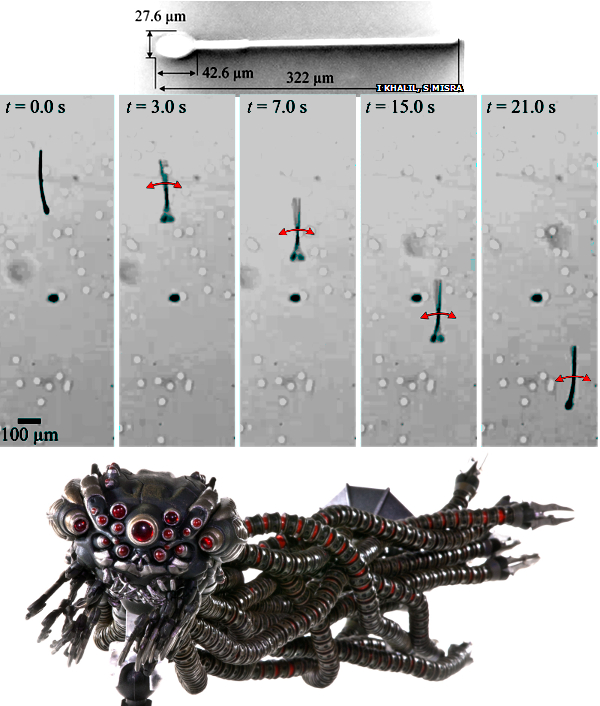Sperm used to seed new swimming robot
 Sperm has been added to the list of natural designs being hijacked by science.
Sperm has been added to the list of natural designs being hijacked by science.
Researchers in the Netherlands have unveiled MagnetoSperm – a sperm-inspired microrobot which can be controlled by the oscillations of a weak magnetic field.
The robots are just 322 microns long and consist only of a head and tail.
The head is coated in a thick cobalt-nickel layer, while the tail is untreated.
When MagentoSperm is placed in an oscillating field of less than five millitesla – about the strength of a decorative refrigerator magnet – it experiences a magnetic torque on its head, which causes its flagellum to oscillate and propel it forward.
Researchers are able to steer the robot by directing the magnetic field lines toward a given point.
The tiny robot was made by spin-coating a silicon support wafer with a five-micron layer of SU-8, a polymer chosen for its ease of fabrication and mechanical stability. The cobalt-nickel layer was then added to the head by use of electron beam evaporation.
The engineers behind the project say many of their latest designs are coming straight from the catalogue of Nature, and if they aren’t broken then efforts to improve them aren’t necessary.
“Nature has designed efficient tools for locomotion at micro-scales. Our microrobots are either inspired from nature or directly use living micro-organisms such as magnetotactic bacteria and sperm cells for complex micro-manipulation and targeted therapy tasks,” says Dr Sarthak Misra, principal investigator of the study, and an associate professor at the University of Twente.
“As technology progresses and many products get smaller, it becomes difficult to assemble objects on nano- and micro-scales,” said Dr Islam Khalil, an assistant professor of the German University in Cairo.
“MagnetoSperm can be used to manipulate and assemble objects at these scales using an external source of magnetic field to control its motion.”
In addition to nano-assembly, the tiny size made possibly by offloading of power and navigation systems opens up a wide range of biomedical tasks for MagnetoSperm to perform, Khalil said.
Targeted drug delivery, in vitro fertilization, cell sorting and cleaning of clogged arteries, could all be on the horizon of the intrepid robo-sperm.
The team says it will now begin working on a method to generate a magnetic nanofibre that can be used as a flagellum.








 Print
Print